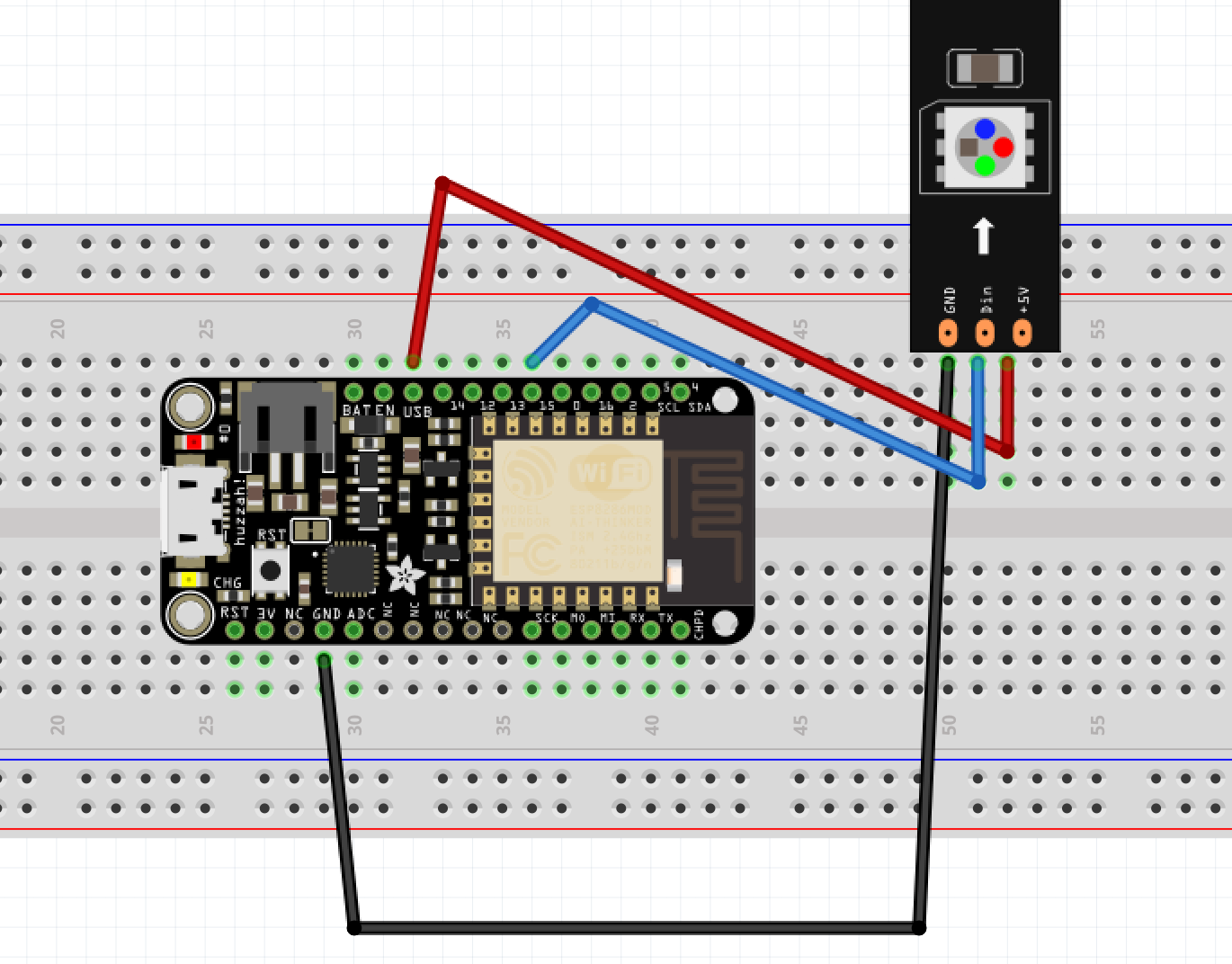Here's a simple, IFTTT-programmable smart LED cloud. Take it anywhere and turn your hotel room pillow into a gentle light-based wake-up alarm.
At first, I was going to use simple NeoPixel LED strips. At the recommendation of my colleague Nick, I switched to individually-strung pixels. They work just fine!
[Here's a quick video showing the effect, when swaddled in bubble-wrap instead of a pillow!]
There are two options for the physical connections:
- Option A is better for complete beginners who haven't soldered before.
- Option B is more stable; it includes soldered connections, but will make your circuit stronger and less easy to pull apart – good for when you want to build a permanent piece.
Hook up the circuit on a breadboard with this configuration:
If you haven't used a breadboard before, check out Sparkfun's excellent tutorial.
The USB pin provides power from the Feather's USB jack. GND goes to GND. Finally, the code sends data to the strip via pin 15.
This is a simplified version of the circuit, because I have pixels to burn: if you want to make sure your circuit will last a long time and be efficient, use Adafruit's power guide.
Physical connections: Option B – PigtailI soldered this little connector to make it easier to hook up physically.
It starts with a little 6-pin female header block, the kind used with some Arduino shields. That gives you 3 pairs of 2 male pins. I connected each pair of male pins with solder.
On that same side, I soldered the female ends that will attach to pins 15, GND, and VUSB on the Feather. Each on its own pin-set. On the same connections, I attached the USB cable's power and ground cables. It looks like this, now:
- VUSB / Cable power
- 15
- GND / Cable ground
This enables me to power both the Feather and the LEDs directly from the 5V USB power bank.
On the female side, I plug in the LED string wires. (I've attached male headers to make this easier.)
Plug the headers in...
Make sure you have the Adafruit NeoPixel library installed for Arduino. (Place the downloaded folder inside /Arduino/libraries, or wherever you keep your Arduino libraries.)
First, I created a sketch (lightning-cloud) that produced a lightning animation I liked aesthetically. It uses 25 LEDs, split into consecutive groups of 5, but should be pretty easily modded.
To make the alarm, I'm adapting some code from Adafruit's robot-driving example. I want to make it super easy to control the Feather from IFTTT, so I'm hoping to expose a URL that can be triggered via aREST.
I've attached the **WORK IN PROGRESS** code to this project. Still needs a couple more nights of testing and rework... wish me luck! :)
Cloud constructionIt's pretty simple: once you get to the hotel, shove these guys into one of the pillows, and you have your own insta-diffused thundercloud alarm! :)
To make the pillow a bit more "fluffy", I've taken the little diffusing globes from some of these and placed them inside the pillow, too. (You can put them over the LEDs, and that'll make them easier to pull out all at once, too; however, that's not strictly necessary.)
You can also build a cloud with foam, bubble wrap, armature wire, and so forth... or anything else that catches your aesthetic fancy!











Comments